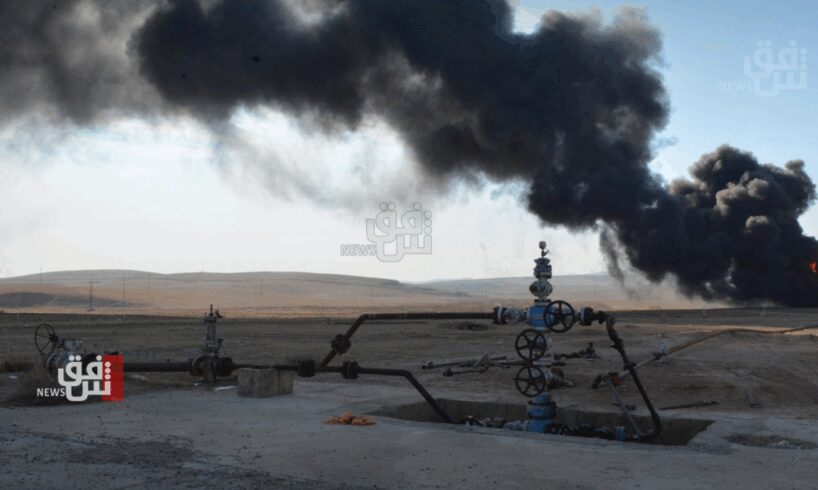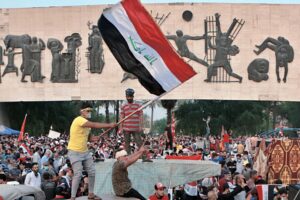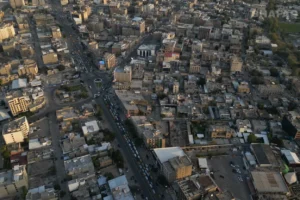
Shafaq News
Since the official end of the latest
regional escalation between Iran and Israel in late June, Iraq—particularly the
Kurdistan Region—has witnessed a noticeable increase in drone attacks targeting
sensitive military and economic sites. While no actor has claimed
responsibility, the frequency, precision, and selection of targets point to a
calculated campaign designed to apply pressure while avoiding confrontation.
The attacks, mostly carried out
using explosive-laden drones, raise pressing concerns about Iraq’s internal
security equilibrium, regional entanglements, and the technological evolution
of asymmetrical warfare.
A Series of Shadow Strikes
The wave of drone incidents began
with precision strikes on Iraqi defense radar systems at Balad, Taji, Ain
al-Asad, and Nasiriyah bases—occurring just hours after US President Donald
Trump announced a ceasefire agreement between Tehran and Tel Aviv. Soon after,
attention shifted northward.
In the Kurdistan Region, multiple
attacks attempted to strike Erbil International Airport—home to a US-led
coalition base—and key oil infrastructure. On July 14, two major oil
fields, Khurmala and Sarsang, were targeted. The latter was hit directly,
igniting fires and forcing a production halt. Just two days later, a
coordinated drone assault struck three more oil facilities in Zakho and Duhok,
including the DNO-operated Peshkhabour field and the US-linked Hand Oil site in
Baadre.
Although the attacks caused no
casualties, the choice of targets—radar systems, airports, and oil
infrastructure—points to strategic intent: undermining state defense,
disrupting international military coordination, and damaging economic lifelines.
Condemnation Without Attribution
The Kurdistan Region
Presidency condemned the strikes as “a threat to sovereignty and
national investment,” urging Baghdad to act decisively.
Iraq’s presidency warned that repeated violations risk unraveling
national security and the public interest.
Prime Minister Mohammed Shia
al-Sudani ordered an immediate investigation and measures to strengthen air
defense and radar capabilities.
The US Embassy in Baghdad also
weighed in, describing the attacks as “unacceptable” and harmful to Iraq’s
investment climate and sovereignty. Washington urged Baghdad to contain armed
actors and ensure accountability.
Despite mounting pressure, no
government body has officially accused a party. The Iraqi military denied the
Kurdistan Region’s implicit suggestion of Popular Mobilization Forces (PMF)
involvement in one of the attacks, stating there were “no unusual military
movements.”
PMF-linked political umbrella, the
Coordination Framework, also distanced itself, labeling the attacks “destabilizing
acts” by rogue forces. Amer al-Fayez, a senior CF member, told Shafaq News that
affiliated factions “had no involvement” and emphasized the consensus to avoid
regional entanglements.
Simple Designs, Strategic Effect
While no photos or detailed forensic
data have been released, military analysts consulted by Shafaq News described
the drones as short-range and likely launched from within Iraqi
territory—suggesting proximity-based tactics rather than cross-border operations.
According to these sources, two main
drone types were used:
-Modified Civilian Drones: Used in
Erbil attacks, these were standard commercial UAVs retrofitted with explosives.
Though limited in range and payload, their small radar cross-section and low
altitude make them difficult to intercept.
-Suicidal Loitering Drones: Used in
Al-Sulaymaniyah and Duhok, these resemble Iranian-designed Shahed models in
both build and propulsion. With short airborne lifespans and limited
maneuverability, they are intended to detonate upon impact—trading sophistication
for surprise and expendability.
Security Analyst Alaa al-Nashou’
told Shafaq News that “Iraq is entering a drone conflict era,” adding that
several armed factions in Iraq possess Iranian-made UAVs such as the
Shahed-129, Ababil-3, and Mohajer-6. These systems—ranging from surveillance to
strike capabilities—are now being adapted for hybrid urban-rural conflict zones
like Kurdistan.
Al-Nashou’ did not attribute the
drone attacks to Iraqi factions, instead opting to withhold judgment during the
discussion.
Another military expert, who speaks
on condition of anonymity, pointed out that military debris recovered from
recent attacks reportedly included small combustion engines and primitive wing
assemblies—suggesting a blend of local assembly and imported components, likely
smuggled in from regional suppliers. The drones’ limited range (under 10 km)
and low-tech configuration further suggest that these are not state-grade
systems but rather asymmetrical tools of coercion.
Will the Attacks Continue?
Multiple military and diplomatic
sources believe that this wave of drone strikes is not an isolated episode but
part of a broader playbook aimed at asserting political influence. Intelligence
assessments obtained by Shafaq News indicate that the same drone networks
responsible for recent attacks in Kurdistan are linked to earlier operations in
central Iraq, including the targeting of Taji and Nasiriyah.
A senior Western diplomat in
Baghdad, speaking on condition of anonymity, warned, “Unless Baghdad disrupts
the operational infrastructure behind these drones—whether through arrests, air
defense upgrades, or diplomatic pressure—we will likely see more attacks in the
coming weeks.” He described the current moment as a “litmus test” for Iraqi
sovereignty.
The Kurdistan Region’s internal
security agency also stated that the drones bear the hallmark of groups
connected to the PMF, but stopped short of naming any faction. Notably, the
Region has refrained from directly accusing Iran or any particular militia in
its latest statements, likely to avoid further escalation. However, frustration
is mounting.
A second statement from the
Kurdistan Ministry of Interior accused the federal government of “covering up”
repeated security violations and failing to release the results of past joint
investigations.
Strategic Fallout and Political
Tensions
The drone campaign comes at a moment
of economic fragility in the Kurdistan Region. Since the shutdown of the
Iraq-Turkiye pipeline in 2023, Erbil has relied almost entirely on domestic oil
consumption and limited internal revenue streams. Attacks on vital oil fields
like Khurmala and Sarsang further weaken the Region’s economic footing and
amplify political grievances with Baghdad.
The strikes also reveal the
persistent fragility of the Baghdad-Erbil relationship. While federal and
regional authorities continue to coordinate through joint command centers,
mutual suspicion—especially around the PMF’s presence in disputed zones—remains
high.
Al-Nashou’, the military analyst,
stressed that the use of drones by non-state actors “allows plausible
deniability and strategic ambiguity,” making it harder for Baghdad to publicly
assign blame or retaliate. “This grey zone warfare benefits militias more than
governments,” he noted.
Written and edited by Shafaq News
staff.





